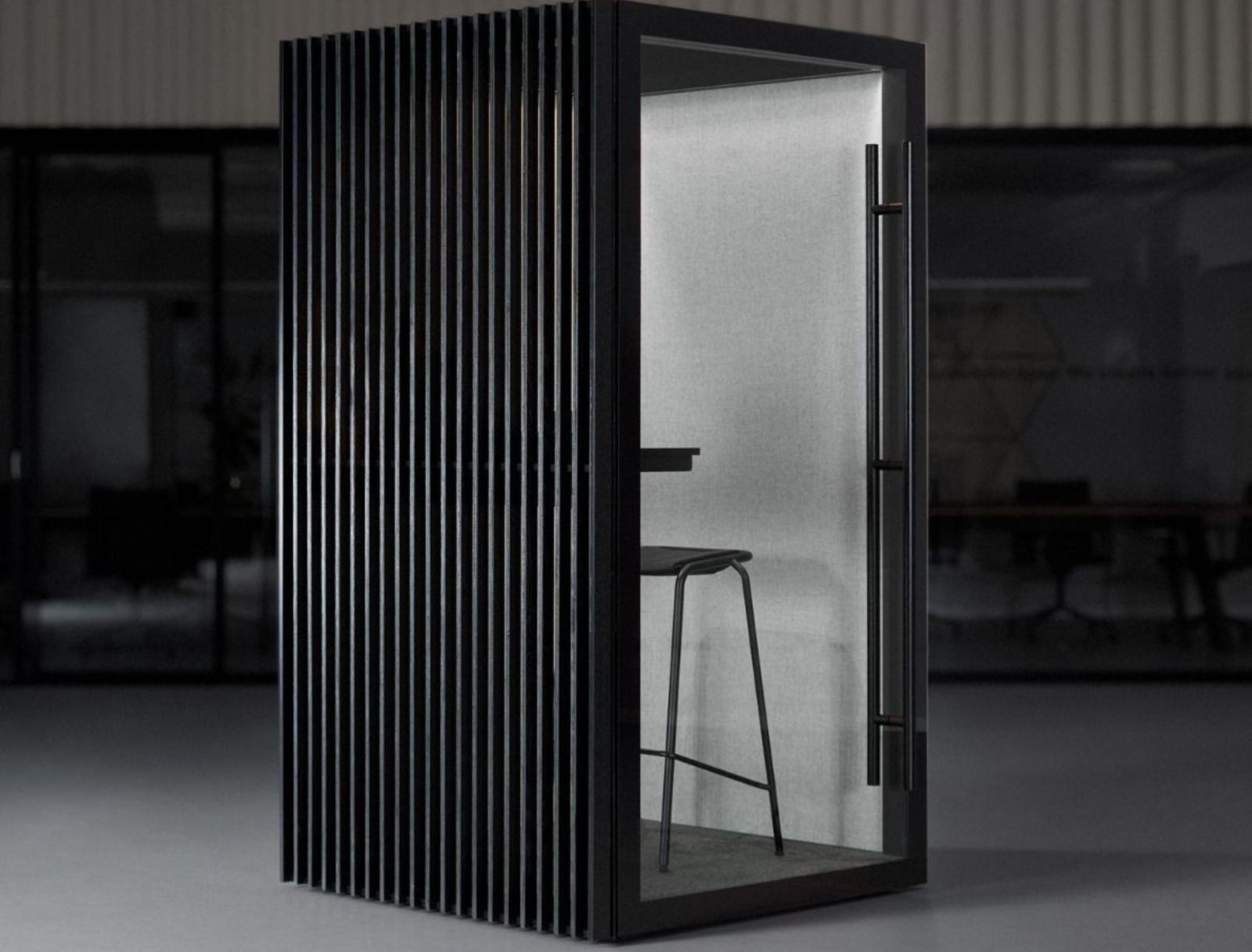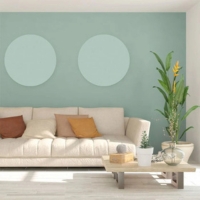
Only sustainable products
Configurable products
Installation available
Free acoustic advice
Acoustic Panel Testing: Understanding Performance Ratings
Acoustic panel testing helps us know how well these sound-absorbing materials work in different places. If you want to make the sound better in your home, office, or studio, knowing how panels are tested and rated can help you choose the right ones. Let's learn about acoustic panel testing and ratings to help you create better sound environments.
Key Takeaways
- Acoustic panel testing measures how well panels absorb and block sound
- Important ratings include NRC, SAA, STC, and αw
- Testing methods include reverberation room and impedance tube tests
- Higher ratings usually mean better acoustic performance
- Thickness: 20-25mm panels for most uses, 40-50mm inch for better low sound absorption
- Real-world performance can change based on how panels are installed and the environment
Understanding Acoustic Panel Properties
Before we talk about testing methods, it's important to understand the main properties of acoustic panels:
1. Sound Absorption: This is how well the panel can reduce echoes and sound reflections in a room. It's important for controlling how sound bounces around and making speech easier to understand.
2. Sound Blocking: Some panels are made to stop sound from going through walls or ceilings. This is important for keeping spaces private and reducing noise between rooms.
These properties are measured through different tests to give ratings that help people compare products. Learn more about how acoustic panels work to better understand how they improve sound quality.
Key Acoustic Panel Ratings
When looking for acoustic panels, you'll see several important ratings:
- NRC (Noise Reduction Coefficient): Measures how well a material absorbs sound at different pitches
- SAA (Sound Absorption Average): Similar to NRC, but more exact and uses more pitches
- STC (Sound Transmission Class): Rates how well a panel stops sound from passing through it
- αw (Weighted Sound Absorption Coefficient): European rating like NRC, used to compare sound absorption of different materials
- Aborption Class - Absorption classes range from A to E, with Class A offering the highest level of sound absorption
These ratings help you compare different panels and choose the best one for what you need. For example, if you want to reduce echo in a room, you'll want panels with high NRC or SAA ratings. The αw rating is useful when comparing products in Europe.
Acoustic Panel Testing Methods
To get these ratings, acoustic panels are tested carefully in special places. Here are the main ways they're tested:
1. Reverberation Room Method (ASTM C423)
This test measures how well a panel absorbs sound in a big, echoey room. It's the standard way to determine NRC and SAA ratings. The process involves: - Measuring how long sound echoes in the room without panels - Installing the panels and measuring the echo time again - Calculating the difference to find out how much sound the panels absorb
2. Impedance Tube Method
This method uses a smaller, more controlled space to measure sound absorption at specific pitches. It's useful for testing small samples or when developing new products. The process involves: - Putting a sample at one end of a tube - Making sound waves at the other end - Measuring the sound that bounces back to see how much is absorbed
Both methods give useful information, but the reverberation room method is usually thought to be more like real-world conditions. Check out our top cost-effective acoustic panels that have been carefully tested.
Understanding Acoustic Panel Ratings
Now that we know how panels are tested, let's look at what the ratings mean:
NRC (Noise Reduction Coefficient)
NRC ratings go from 0 to 1, with higher numbers meaning better sound absorption. For example:
NRC Ratings of Common Materials
- Bare concrete - 0.00- 0.05
- Carpet - 0.15 - 0.55
- Standard acoustic panel - 0.6-0.8
- High-performance acoustic panel >0.90
A panel with an NRC of 0.75 absorbs 75% of the sound that hits it, making it good for general acoustic treatment. Remember that NRC is an average across different pitches, so some panels might work better for certain sounds than others.
SAA (Sound Absorption Average)
SAA is like NRC but gives a more detailed measurement across more pitches. Sound experts often prefer it because it's more accurate. SAA values usually go from 0 to 1, with higher numbers meaning better absorption.
STC (Sound Transmission Class)
STC ratings usually go from 20 to 60 for most building materials and acoustic panels. A higher STC rating means the panel is better at blocking sound. For example:
- STC 20-30: Thin walls, not good at blocking sound
- STC 30-40: Normal walls, some sound reduction
- STC 40-50: Good sound blocking for most uses
- STC 50+: Excellent at keeping sound out
When choosing panels to keep sound out, remember that an increase of 10 STC points means the sound will seem about half as loud.
Sonio's Acoustic Panel Testing and Ratings
At Sonio, we're proud of our carefully tested acoustic solutions. Here are some of our best products:
1. Silent Space Acoustic Panel
This light, affordable panel is great at absorbing sound, making it perfect for reducing echoes in different spaces. Starting at £99.95, it's a good choice if you want to improve acoustics without spending too much. The Silent Space panel has: - High NRC rating for good sound absorption - Versatile design that works on walls and ceilings - Easy installation for quick acoustic improvements
2. Ecophon Solo Circle Suspended Acoustic Ceiling Raft
This high-quality acoustic solution is great at absorbing high and medium-pitched sounds, perfect for offices, schools, and restaurants. Available from £780.00, it combines excellent acoustic properties with a nice look. Key features include: - Outstanding SAA rating for precise sound control - Unique circular design that looks interesting - Hangs from the ceiling for targeted acoustic treatment
Check out our full range of acoustic ceiling panels to find the perfect solution for your space.
Things That Affect Acoustic Panel Performance
While ratings are important, several things can change how acoustic panels work in real rooms:
- What the panel is made of and how thick it is: Denser materials usually work better at blocking low sounds, while porous materials are better at absorbing high sounds.
- How panels are installed and where they're placed: Where you put the panels and the space behind them can really change how well they work.
- Room characteristics and environment: The size, shape, and existing surfaces in a room can all affect how acoustic panels perform.
It's important to think about these things when choosing and installing acoustic panels to make sure they work as well as possible. Check out our top 9 tips for choosing acoustic panels to make the best decision for your space.
Choosing the Right Acoustic Panels
When picking acoustic panels, think about:
- What acoustic problems you need to solve (like reducing echo or blocking sound)
- Matching panel ratings to what you need
- How the panels will look in your space
- Balancing performance with your budget
- How long the panels will last and how to take care of them
Remember, the best acoustic solution often uses different types of panels and treatments to solve various sound problems in a space. Think about using a mix of wall panels, ceiling treatments, and even floor solutions for complete acoustic control.
Conclusion: The Future of Acoustic Panel Testing
As technology gets better, we can expect to see even more precise testing methods and ratings for acoustic panels. Some new trends include: - Using computers to predict how panels will work in specific spaces - Making smart materials that can change to meet different acoustic needs - Developing eco-friendly acoustic materials that work really well
At Sonio, we're always working to improve our products to meet our customers' changing needs.
Understanding acoustic panel testing and ratings is important for creating better sound environments. Whether you want to improve the sound in a home studio, office, or public space, choosing the right panels can make a big difference. Learn more about why acoustic panels are important in office design to see how they can change your workspace.
Ready to make your acoustic environment better? Check out our range of tested and rated acoustic solutions to find the perfect fit for your space. With Sonio, better sound is just a panel away. Remember that while ratings are helpful, the best way to know if an acoustic panel works well is to see how it performs in your specific space. Don't be afraid to ask acoustic experts for help with complex projects or unique spaces.
[related_products is_auto_added="1"] Acoustic Wall Panels
Acoustic Wall Panels  Acoustic Ceiling Panels
Acoustic Ceiling Panels  Acoustic Ceiling Baffles
Acoustic Ceiling Baffles  Acoustic Screens
Acoustic Screens  Acoustic Fabric
Acoustic Fabric  Acoustic Lighting
Acoustic Lighting  Acoustic Booths and Pods
Acoustic Booths and Pods  Acoustic Panel Accessories
Acoustic Panel Accessories 







































